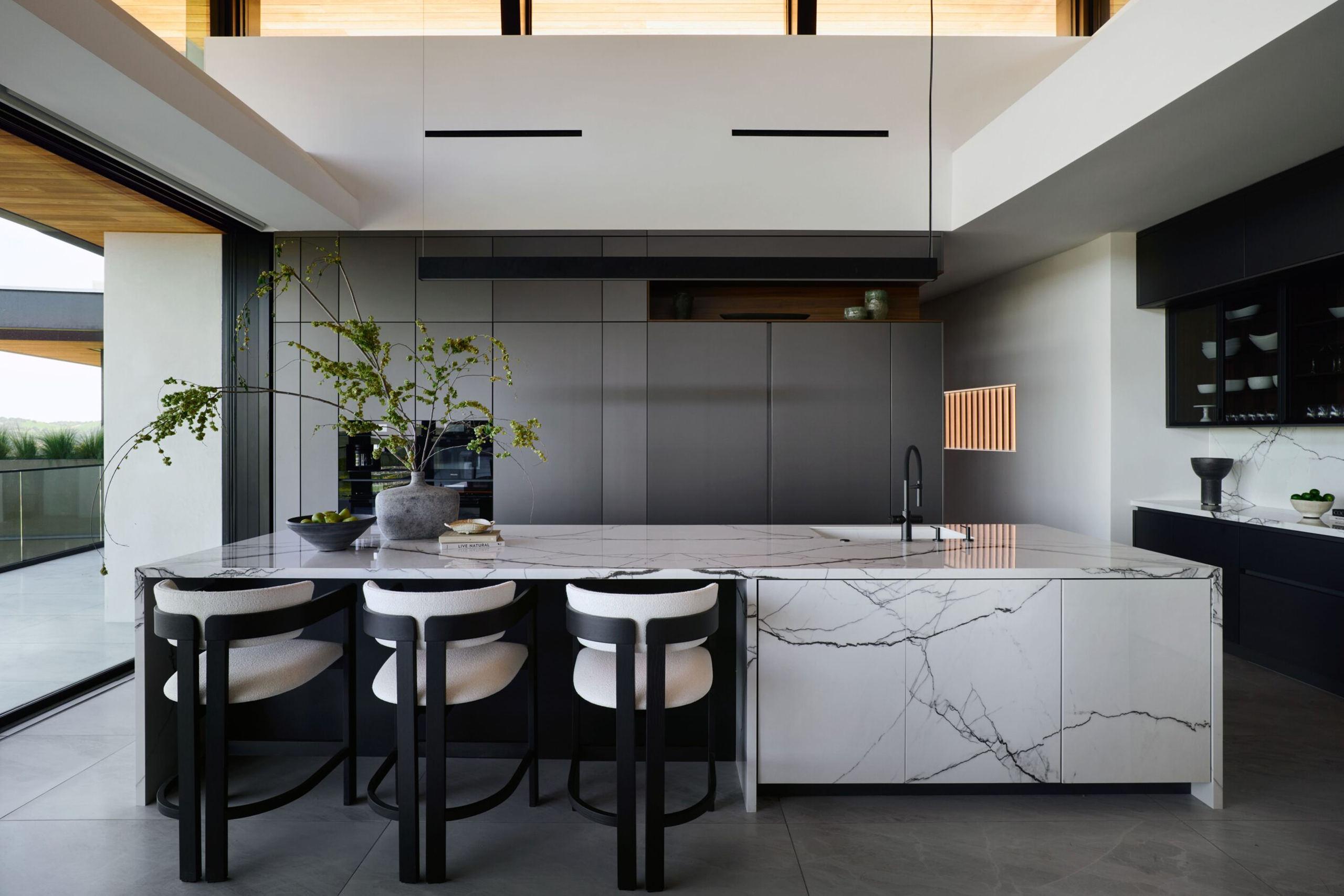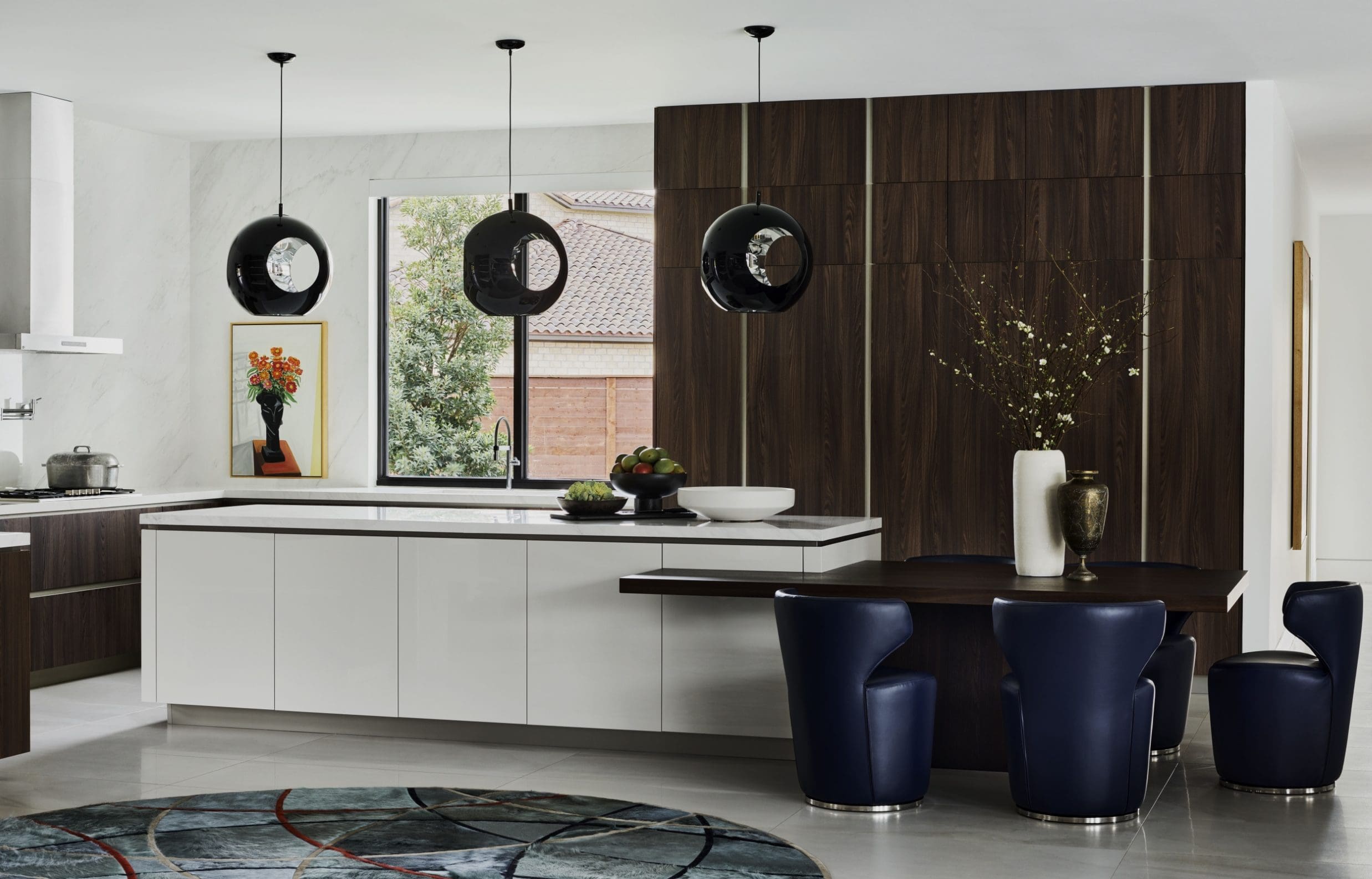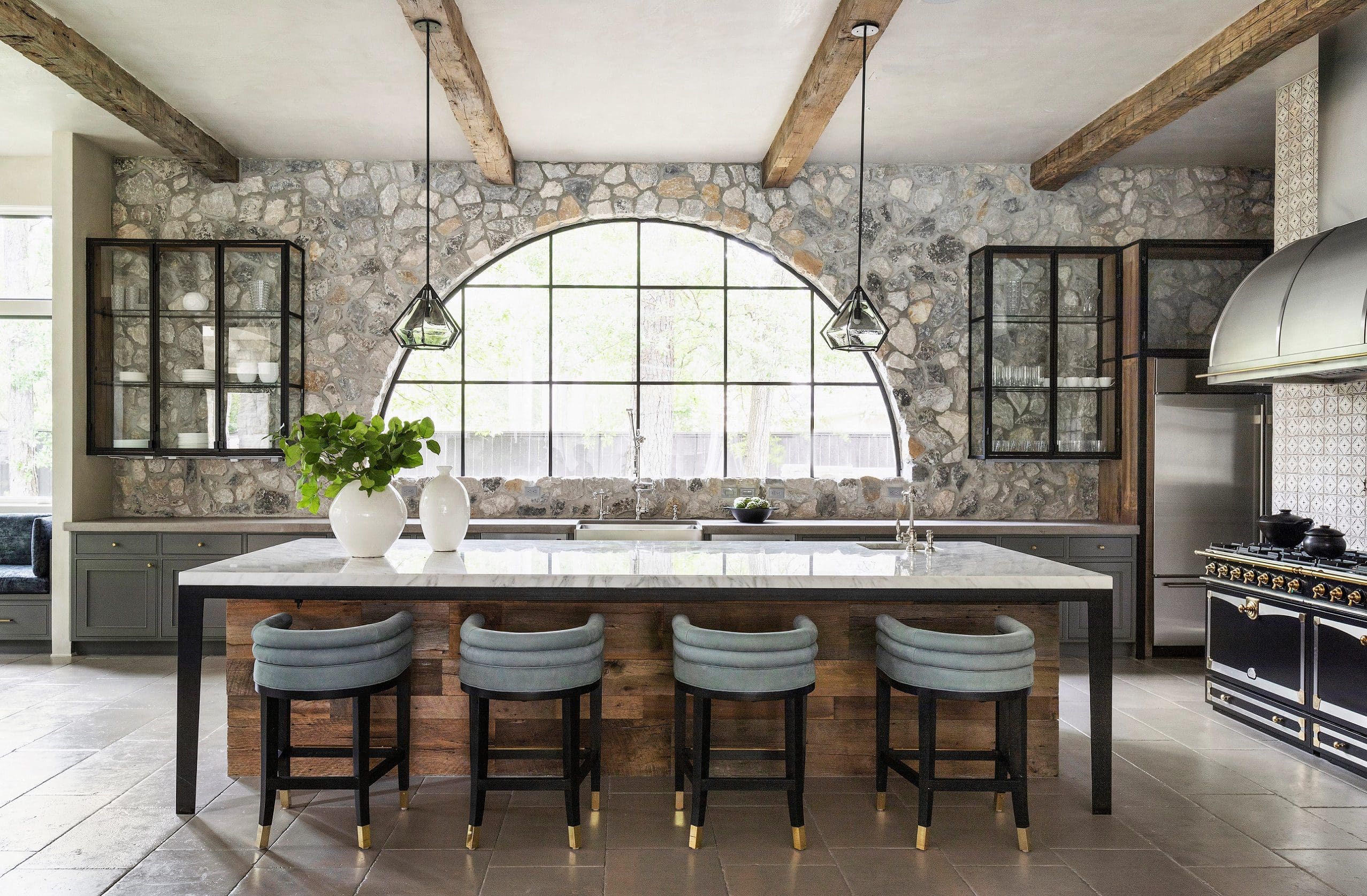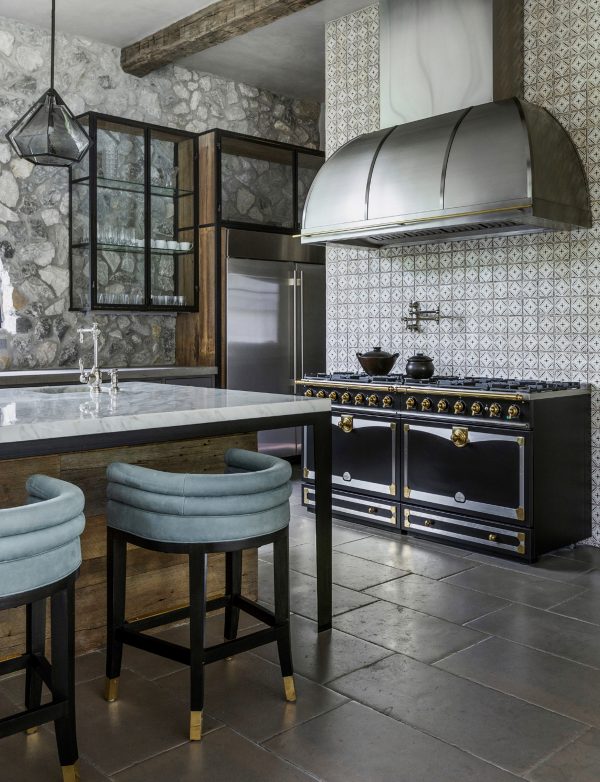There’s a persistent idea that a bold kitchen needs to be dramatic or over-the-top to make an impact. But in the world of refined design, boldness has nothing to do with excess. It has everything to do with clarity. When a space is designed with intention and conviction, it speaks for itself—quietly, confidently, and without needing to shout.
A bold kitchen doesn’t rely on heavy detailing or loud colors to stand out. It makes a statement through proportion, materiality, and form. It might be defined by a strong silhouette, an unexpected finish, or the feeling you get when every element feels balanced and deliberate. This kind of boldness doesn’t overwhelm. It leaves an impression that lingers.
What feels bold to one person might feel understated to another. That’s part of what makes it so personal. A space can be minimal yet powerful. Layered yet composed. Whether you gravitate toward sleek restraint or expressive contrast, the key is knowing what feels right and being confident enough to commit to it.
That’s where true boldness comes from. Not from volume, but from vision.

Proportion Shapes the Experience
One of the first things people notice in a kitchen isn’t the color or the material. It’s the scale. Proportion shapes how a space feels from the moment you step into it. It guides the way your eye moves, how your body navigates the room, and how each part relates to the whole.
A strong sense of proportion creates presence. That might mean allowing a kitchen island to feel sculptural and grounded. It could be the decision to extend cabinetry all the way to the ceiling or keep wall space intentionally bare. These choices help define the mood and give the kitchen a sense of balance and weight.
The beauty of working with scale is that it doesn’t require anything decorative. A large element, if thoughtfully placed, can stand entirely on its own. It becomes the anchor that allows everything else to feel intentional. At the same time, contrast is important. Pairing a bold volume with something light or streamlined creates visual movement and keeps the design from feeling too heavy.
What you leave out is just as powerful as what you include. Boldness doesn’t come from filling every inch. It comes from understanding how much space each element deserves, and letting it speak clearly.

How Texture and Tone Add Impact
Every material in a kitchen adds a layer to the story. The way it looks, the way it feels, and the way it changes over time all contribute to the experience of the space. In a bold kitchen, materials are chosen not just for appearance, but for how they ground the room and create presence.
There’s something timeless about using natural textures that reveal their character over time. Think honed stone, brushed metal, oxidized wood, or hand-finished tile. These materials hold depth and subtlety. They don’t ask for attention, but they hold it. And they offer a kind of richness that doesn’t depend on patterns or ornament.
The most compelling kitchens often rely on contrast. Rough and smooth. Matte and polished. Organic and precise. These pairings bring energy to a space without making it feel chaotic. They create a layered look that feels considered, not crowded.
When the materials are right, you don’t need to do much else. They create tone. They add emotion. And they bring a level of refinement that stays with you, even after you’ve left the room.
Monochrome Adds Quiet Power
There’s a certain confidence in restraint. Monochrome kitchens can be some of the boldest, not because they are loud, but because they are focused. Working within a tight color palette allows every other detail—form, texture, light—to step forward.
When a kitchen is composed in a single tone or a family of closely related tones, the eye naturally starts to notice the nuances. You begin to see how a matte finish absorbs light, how a high-gloss surface reflects it, or how different textures play off one another in subtle ways. This kind of design slows you down in the best way. It invites you to engage more deeply with the space.
Monochrome doesn’t mean monotone. The goal is not to flatten the room, but to find depth through layering. A bold kitchen in black, ivory, charcoal, or soft olive can feel more expressive than one with a wide mix of colors. It’s not about limiting choices. It’s about being intentional enough to know when enough is enough.
This kind of quiet boldness leaves room for everything else to breathe. It allows architecture, scale, and materiality to speak without competing for attention.

Designing with Light and Shadow
Lighting is one of the most overlooked opportunities in kitchen design. It’s also one of the most powerful. In a bold kitchen, lighting does far more than provide visibility. It becomes part of the architecture. A sculptural element. A mood setter. A defining gesture.
The shape, scale, and finish of a fixture should all feel intentional. A pendant over the island might echo the lines of the space. A linear fixture might elongate the room. Even something minimal can have impact if the placement and balance are right.
Light isn’t just about the fixtures either. It’s about what they reveal. A soft wash of light can highlight the grain of a wood cabinet. A subtle spotlight can bring depth to a textured wall. These choices create shadow, dimension, and atmosphere—things that ultimately make a space feel complete.
When lighting is designed thoughtfully, it becomes part of the experience, rather than just a utility. It shapes how a space feels at every hour of the day. And it offers one of the most immediate ways to bring character into the room without adding visual weight.

Function as a Form of Luxury
There’s nothing more elegant than a kitchen that works exactly how you need it to. Function doesn’t need to be sacrificed for style. In fact, when function is refined, it becomes one of the most beautiful aspects of the design.
A bold kitchen should support the way you live. The flow should feel intuitive. Surfaces should invite use without feeling utilitarian. Appliances, lighting, storage, and layout all play a role in how a space performs. But performance can be elevated to an art form when each element is approached with clarity and care.
Efficiency should feel seamless, not clinical. Whether it’s a perfectly proportioned island that supports both prep and entertaining, or cabinetry that hides clutter without feeling bulky, these design decisions shape the everyday experience. Even the smallest details, such as drawer pulls, lighting controls, soft-close hinges, contribute to a sense of refinement.
True boldness isn’t about compromise. It’s about building something so well-considered that you don’t have to think twice while using it. That quiet assurance is what makes a kitchen feel luxurious, even when it’s at its most functional.
Boldness Is Personal
A kitchen only feels bold when it feels personal. Without that connection, it risks becoming another version of what’s already been done. But when you introduce details that reflect your lifestyle, your values, and your sense of beauty, the space takes on new life.
Boldness doesn’t mean doing something no one else has done. It means doing what feels most true to you and doing it with clarity. That might be a custom piece of furniture that anchors the room, a material that evokes a memory, or a specific layout that mirrors your daily routine.
Personal design choices don’t need to be dramatic. In fact, the smallest decisions are often the most meaningful. A specific edge profile. A material with history. A color that brings calm. These are the things that make a space feel lived in and loved, not just designed.
Confidence comes through clearly when a space feels intentional, and when it feels like it belongs to you, that’s what makes it bold.
